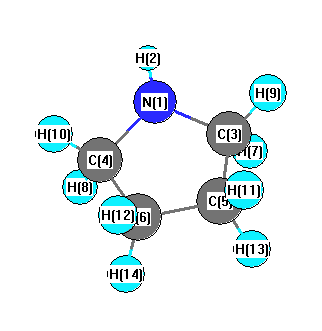.
| squib |
reference |
DOI |
| 1984Cam/Obe:217 |
W Caminati, H Oberhammer, G Pfafferott, RR Filgueira, CH Gomez "The Microwave Spectrum of Pyrrolidine" J. Mol. Spect. 106, 217-226 (1984) |
10.1016/0022-2852(84)90094-8 |
| 1992Kuchitsu(II/21) |
Kuchitsu (ed.), Landolt-Bornstein: Group II: Atomic and Molecular Physics Volume 21: Structure Data of Free Polyatomic Molecules. Springer-Verlag, Berlin, 1992. |
|
| 1997Bil/Gei:2537 |
Billes and Geidel. Vibrational Spectra and Harmonic Force Fields of Pyrrolidine derivatives: Comparison Between HF, MP2 and DFT Force Fields. Spectrochimica Acta Part A. Vol. 53. pgs. 2537-2551 |
10.1016/S1386-1425(97)00185-6 |
| TRC |
Frenkel, M; Marsh, K.N.; Wilhoit, R.C.; Kabo, G.J.; Roganov, G.N.,Thermodynamics of Organic Compounds in the Gas State,Thermodynamics Research Center, College Station, TX, 1994 |
|
| webbook |
NIST Chemistry Webbook (http://webbook.nist.gov/chemistry) |
10.18434/T4D303 |









